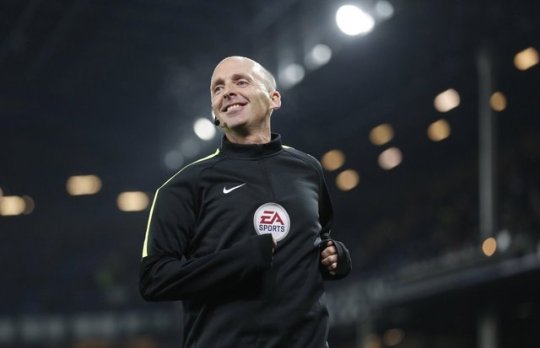This is the blog of current MRes student Dane McCarrick, contaning a series of ongoing reflections surrounding his growth as an aspiring researcher. Updates and posts are expressed through Premier League referee Mike Dean, underpinning the basis of empirical inquiry with humour!
Don't wanna be here? Send us removal request.
Video
Oh, and finally, amongst engaging with all things MRes, I thought it fitting to give you a taste of how I spend my Saturday afternoons...
Ill leave you with this...Enjoy!
0 notes
Text
Full Time...
Evening all- Happy New Year,
Following the exploits of the previous semester I thought it fitting to leave a final post before metaphorically blowing the whistle on full time! I appreciate not all of you may regularly follow football, so hope you have got the gist of my blogs over the months.
In reflection I have learnt a whole host of skills over the past semester, from eventually getting to grips with R and producing posters through to learning to develop psychometric questionnaires. While I cant directly relate to how Kolb’s theory has directly aided in this, nor how I expected it would, it certainly helped indirectly. I clearly spend different periods of time in different domains of the model and through reflective practice eventually saw the light at the end of the tunnel and pulled through.
Once more, I understand that some of the content within my blogs could be perceived as informal, or even irreverent in places. However, I cannot stress enough how helpful this narrative has been, and while I understand this probably isn't the most typical academic blog, its format has been fundamental to my learning.
I have faced numerous difficult points during the last few months and at times when I felt like giving up, I cannot overstate the value of humour when psychologically rallying myself up- especially when reading back through posts! So I hope this perceptive is understood should my professionalism be in any doubt.
Lastly, I would like to thank you for spending the time to read through my blogs- they haven't been easy on the eye at times, especially during the early days! That said, I have learnt a lot this semester, and I cant wait to get started with the next, and although I might have been slightly cynical originally, I cannot exaggerate the usefulness of this blog enough. It has allowed me to put my own slant on things not only academically, but on a personal note too- which I hope has came across when reading this.
Until next time,
Mike
0 notes
Photo
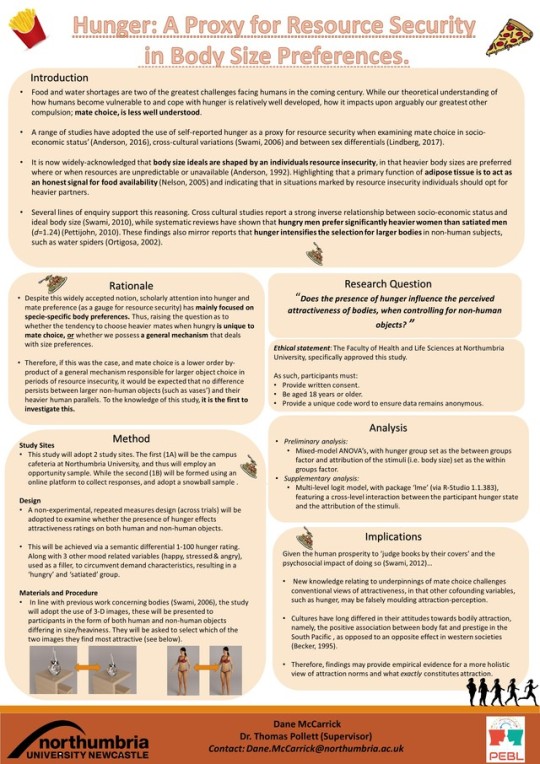
Afternoon all!
As you'll be able to see by the above poster I have not been wasting my evenings since we last touched base!
The poster forms 50% of my mark on one of the MRes modules and twins up with my research placement with Tom, which as you can see is based on the prevalence of hunger when judging human bodies; when controlling for non-human objects.

"Why?" I hear you say..."how are objects even remotely related to how we judge the attractiveness of bodies?" Well, that is the million dollar question. Within the associated literature, there is a long standing association between the presence of hunger in an individual, and their likelihood of choosing a heavier partner-given the choice.
However, to my knowledge no such study has acknowledged the possibility of a 'higher order' general mechanism for judging size preferences, that in this case, should the literature read true, be an underpinning for our tendency to choose bigger bodies when hungry. Therefore, to put this to the test, the implementation of non-human objects such as VERY well created vases' and even BETTER made chairs should cast light onto such underpinnings. Should a 'general' mechanism exist then it would be expected that no difference exists between heavier bodies and their non-human parallels. Thus, shedding light onto the phenomenon of what exactly constitutes attraction...
Interesting stuff I know!
Have a nice evening,
Mike
0 notes
Text
Alive and Kicking
Yes, you heard it here first ladies and gentlemen, I am not dead, not missing, and most shockingly am not coming to you from a dismantled computer plagued with syntax errors. My D-day with VoldRmort has came and gone, and thanks to a few meetings with Chris Martin (and one with Tom) I appear before you the victor of my first battle with R (or at least I think).
You are probably wondering where I have been for the past 3 weeks, or have even perhaps if I am still alive... I would put you in the picture, but that would involve unthinkable quantities of coffee, library deliveroo receipts and the CCTV footage of me scaling the west face of Northumberland building to access a window having been locked out at 9pm on deadline eve- so you've not missed much...
However, long story short I have learned the core basic of R-Studio and the underlying mechanics that allow codes to run and why sometimes they do not. For example, assigning variables, making histograms, running rather complex analyses (like non-parametric tests) and exporting them as separate files. I was so proud...I managed to complete my WHOLE assignment with no errors and with the entire document running, happy days I thought- not. It appeared VoldRmort had had at least one more trick up its sleeve, commonly known as knitting...
Having spent every waking hour of the past 6 weeks worrying about R and at least trying to learn its complexities before eventually getting the end product, just as as we thought in the case of the disgruntled child earlier in my series of blogs, its toys came flying out the pram.Rather than being content with all it has been provided so far, it wanted more- which unlike most kids who opt for the latest Xbox or Playstation this little man wanted the slightly less popular cyber parallel of a KNITTED jumper.
By this time it was 8pm on deadline eve. Following 11 gruelling hours of warning messages and having attempted more knitting procedures than the entire elderly population of Newcastle, I managed to submit my final centrepiece at 6am the following day. However, much like other historic battles, it didn't go by without its casualties. I lost a good 20% of my code and 2 questions wouldn’t run at all.
That said, as the sun rose over the Tyneside skyline, as I sat with 3 of my fellow students who didn't manage to submit anything amongst the confusion.... I had a strange feeling of joy knowing the ordeal was over and that I had came out the other side not only knowing far more than I had weeks prior, but that I had tried my darn best at what continues to be comfortably the most difficult thing I have ever tried in my life!
Fear not! Its not all doom and gloom and I will ensure for my next attempt in January I either set off with the knitting process drastically earlier, or, by passing the task onto a suitability experienced pensioner who I will pay in the form of re-runs of ‘last of the summer wine’ and ‘keeping up appearances’.
On a more serious note, I am just putting the finishing touches to my next assessment as part of the MRes which takes the form of a poster presentation. While on Wednesday I am engaging in a gait study with Conner Leslie as part of my placement and anticipate on having a meeting with Tasmin on Thursday to discuss a ‘sustainability intervention’. While on Friday a meeting is scheduled with Tom to set an action plan for the hunger study my poster is based on. So as you can see I am neck deep in research and loving every minute of it.
Lastly, in the words of Simple Minds, despite the voluminous mental breakdowns R has caused I am “Alive and Kicking” and well and truly mustering though. It goes to show just as in the case of refereeing, it isnt how you make mistakes, but how you respond to them that counts for the difference between success and failure.
Until next time,
Mike

0 notes
Text
Help...
OK, I need help and lots of it. I have came to the conclusion following a rigorous weekend of statistical ‘total wipe-out’ that VoldRmort has won, and R is certainly not for me. I have tried all methods, from you tube clips, lectures slides and group sessions through to ‘winging it’, and I have been well and truly defeated. If you are reading this, please take 2 minutes out of your day to spare me a thought, along with the credits that I am going to loose as a result of not being able to work a piece of software!
I’m guessing I have invested around 15-20 individual hours into conceptualising coding (not to count the time I have spent on here moaning) and nothing is clicking into place. I am considering setting up base camp outside Toms’ office and erecting some form of hammock somewhere within Northumberland building this evening and handing myself in first thing in the morning!
If you are reading this and thinking oh, what can be so hard... Well for a start, the software doesn't work on my laptop so the only place I can access it is in the post-grad room, which be assured is the thermostatic equivalent of the north pole at the best of times, never mind in October! Secondly, my U-drive fundamentally refuses to let me use it as a ‘working directory’, while when I do eventually get onto a rmd. shell I have absolutely no idea what each code means or more disturbingly why I am typing it!
In all honesty, you are probably getting very bored of listening to me moan on (unless you’re gifted with a sick personality and find it amusing), however, I think the time has come to hang up the metaphorical boots and call it a day. I’m off to meet Tom tomorrow and see if he can offer any ‘light’ at the end of the tunnel. If not, you will find me in a dark room somewhere in Northumberland building, listening to Coldplay and weeping myself to sleep... Enjoy your evenings!
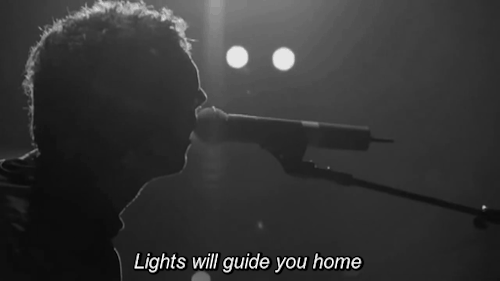
0 notes
Text
Apparently, due to my metal state, this is the only way to work with R right now... #NoSyntaxErrors

0 notes
Text
Journal Club and Stress.
Afternoon all, I officially stuck with R. Despite a solid 5 days dedication in the past week, and under 3 weeks till my deadline for its assignment, I have still yet to fully understand what is going on in regard to this aspect of my life. To be completely honest, I am beginning to miss SPSS (which I never thought I would say), and while you are probably getting sick of me complaining about it, I find its existence somewhat like a menstruating female.
It starts of with the kindest intentions by allowing me to happily get on with life, however, I put my foot slightly out of place and it comes down on me like a sledgehammer, gives me the cold shoulder for a solid 4 hours, and eventually gives me “hints” as to what I have done so wrong! Much like in the case of your other half, 9/10 times I have trivially missed out a fine detail or misplaced something, but for reasons unknown to me, in its eyes Armageddon is upon us!
So, drawing upon Kolb it would be fair to say I have yet to step out of the reflective observation stage in this weeks torrent of exercises, so I have done the wise thing and given up (at least for the time being). I have to be transparent, this is without any questionable doubt the hardest thing I have ever encountered in my entire educational life, and to say I am struggling is a monumental understatement.
I mean, even when I do get an output I cant begin to conceptualise it- as I spend so much time stressing over R, I don’t have the time (or the mental strength) to revisit my stats notes related to it. The ONLY thing keeping me sane at the present moment is the knowledge that my thesis is 90 credits and perhaps in the grand scheme of things it wont count so much, oh and beer, lots of beer!
Anyway, in lighter news, as a consequence of giving R the cold shoulder in return, it allowed me to focus on my first assessment of the MRes- which took place on Monday in the form of a journal club. Originally, the thought of sitting for 25 minutes talking about a paper that I know little about did scare me (not as much as R does mind), however, it has to be said I really did enjoy not only the assessment, but the experience as a whole.
In line with my placement in the PEBL lab, I chose a paper by Viren Swami and Martin Tovee which examined the role of resource insecurity either in the form of socio-economic status or hunger (as a proxy) and their impact on males choice of female breast size.
Given this was the first paper I have read and really got my teeth stuck into this year, I thought it would be fitting to explain it and share my thoughts around it (much like I did in the assessment).
So, the paper used two studies to account for cross-cultural differences in breast size preference, and also socioeconomic status.
Rationale
· It has been suggested that human female breast size may act as a signal of fat reserves, thus indicating access to resources (food).
· Much research within the ‘attractiveness’ arena has focused on the role of body weight, height, facial, hair colour and other popular variables. However, little attention has been paid to arguably the most significant of all female attractiveness cues....breasts.
· Those scholars who have investigated the evolutionary benefits of breast size have instead examined their functional roles, specifically breast-feeding and infant nursing.
· While much work has illuminated the significance of body size choice in relation to hunger, no such study has specifically narrowed its line of enquiry on female breast size, despite the knowledge that the female breast is primarily used as a medium for adipose tissue storage.
· In line with this, and a recent surge in papers related to attractiveness, the present study focused its approach to examine male’s female breast choice using the proxy of hunger.
Study 1
· Participants were the same nationality (Malaysian) with different socioeconomic backgrounds (medium for resource security).
· This was based on the widely cited notion that there are reliable differences in body size judgements between socioeconomic statuses.
· Used 3 very different areas of the state of Sabah, recruiting participants from varying socioeconomic backgrounds to make up each group (low-village, middle-towns, High- tourism centre).
· Asked each group to rate which female they found most attractive (not referring to the breasts), with findings showing men in the low group prefer the largest breasts than the medium group, who in turn prefer larger breasts than the higher. Thus, providing further evidence that calorific storage may act as an indicator of male partner preferences and while that in modern day western societies resource insecurity is less of a prominent issue, perhaps our primitive past still seems to be more pertinent than first thought.
Study 2
· However, due to critics suggesting that the study site of the first study may have impacted upon choice (i.e.individual differences/generality), the scholars used hunger as a proxy (consistent with research in the area) for resource security on men who share the same environment.
· Following selection procedures (randomised) males were either classified in the hunger group, or the satisfied group and asked to rate the same stimuli as in study 1, in addition to the appetite sensation scale to underline their hunger levels.
· Results showed that hungry men rated the larger breasts as significantly more attractive than did satisfied men.
Conclusion
Taken together the two studies provide further evidence that breast size may be indicative of access to resources, and particularity how males are able to detect this despite the unnecessary need to do so in modern day western societies. It also adds greater weight to a growing line of enquiry that suggests female breasts not only serve as a cue for attractiveness as many eye-tracking studies have found, but also that they serve as indicators for maturity, sexual readiness,health and now access to resources.
That said, such work is not without its limitations. While the authors reported many limitations to the study such as the inability to control for individual differences, demand characteristics and the growing understanding that stress may cause hunger, possibly skewing results. The most difficult thing I find impossible to fathom it the theory of the whole situation.
If one considers the very nature of gene propagation, for centuries males specifically selected those females they perceive to be most suited to a number of evolutionary purposes surrounding the successful production and catering of offspring. So, therefore, surely if breast size was so important and such a good indicator of access to resources then to put it plainly, surely males would have selected those females with larger breasts throughout the process of evolution, and today we would observe a less divergent range of breast size... In fact the whole things got me feeling like this....
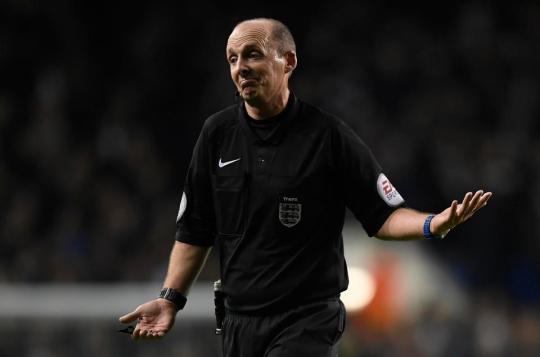
So yeah, my head has had a pretty draining, yet compelling week! It is currently academic development week and to think I am 1/4 way through my guided teaching on the MRes is absolutely mad! I’m off to consult the closest Dr on remedies of nervous breakdowns and if there is any medicine that if I can take, or even slip into R’s drink. I’m thinking along the lines of chloroform right now...Hopefully with a dose of that, it might begin to be that bit more benevolent!
Ill keep you posted!
Mike
0 notes
Text
Learning to Learn.
Morning Folks. Thankfully, following an event-free and bubble-free weekend, I have channelled my attention to all things MRes, specifically the aspect of this module which concerns (and in-fact underpins) the theory of my learning.
After a scout around google, I have decided to choose the dated, albeit widely sited framework proposed by David Kolb in 1984. Kolb's learning theory relies on two levels: a four stage cycle of learning and four separate learning styles, and the learner’s internal cognitive processes.
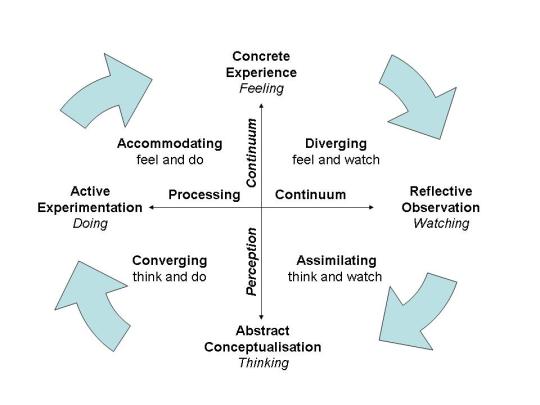
As the image above eludes to, such cognitive processes can be broken down and actually catalyse the learning process with the aim of yielding positive improvements. Encase your thinking ‘ehhh’, whats this got to do with the MRes, this is the time to take a sip of your coffee and lean forward...
For example, take R (VoldRMort for those keeping up). It could be said that while I am being pelted with syntax errors I am in the ‘concrete experience’ stage, so therefore ‘diverge’ by having a feel around with some new codes and still don’t get the correct outcome. So, I then engage in reflective observation by watching some of the screen casts related to that analysis, and even ‘assimilate’ by mirroring my codes with that of the lecture slides.
Following on from this, say I get a light-bulb moment (which I never do!) and figure that I have forgotten to install a package for the analysis, so ‘converge’ and do such that. Then, thankfully, I am granted access to the analysis by the dark lord, so I think about how I came to such an outcome and ‘actively experiment’ with a few other analyses, before ‘accommodating’ the process, thus understanding where I previously went wrong. Thus, putting the whole ordeal down to ‘concrete experience’ to fuel my knowledge of the next analysis, while punching the air with joy somewhat like this...
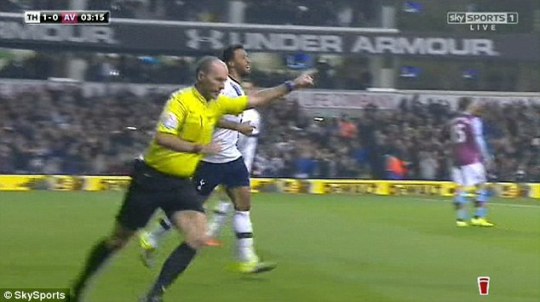
So, while this is a rather descriptive way of telling you how I plan to learn on the MRes, and while it will form the basis of everything to follow on this blog, I thought it imperative to inform you of the process underpinning it...Sir Kolb.
That said, considering the deadline for my assignment is a month today, I will now leave you your day, while I go engage myself with all things R.
Mike
0 notes
Text
Breasts and Bubbles...
Afternoon all! Following a rather relaxed week due to the international break I have had plentiful opportunity to 1-train, and 2- engage with a few things MRes! First and foremost I think it would be fitting to fill you in with the events of the past week, and more excitingly a few updates from my side!
Firstly, in the absence of neglecting R due to valuing my mental health and sanity, this week I have turned my attention to more applied settings, specifically in relation to my research placement within the PEBL lab. The majority of my Monday was spent getting a firm understanding of the existing literature surrounding hunger and mate choice. This concerns a project driven by my lecturers Tom, Kris, Tamsin and an undergraduate student (called Jasmine) who I have been asked to take under my proverbial wing (I know.. wish her luck).
Following our initial meeting, myself and Jasmine were tasked with the data collection which involves using Ipads to gauge individual attractiveness preferences on a number of standardized bodies, while also using inanimate objects (such as very well created vases’) as a form of control. Personally, I find the project very interesting, and have used my newly acclaimed knowledge of the area as a means to select my paper for the 'journal club' assessment.
One thing that struck me when scanning over the literature is that while it is widely accepted that men in particular prefer larger bodies when they are hungry, due to the heuristic of resource security in body image (the suggestion that larger bodies are indicative of adipose fat reserve, which indicates access to resources)- very few scholars have investigated arguably the most favourable asset of the female body....breasts.
With this in mind, I selected pretty much the only paper in area by Swami and Tovee (2013), who specifically examined the impact of resource security on men's female breast size preference, again using the rationale of adipose fat reserve as a pre-curer for breast size. Consistent with the associated literature, using 2 studies inspecting the impact of socioeconomic status and the manipulation of hunger on breast choice, they reported that both the ‘low’ socioeconomic men and the hungry men rated larger breasts as significantly more attractive than ‘medium’ and ‘high’ socioeconomic men in addition to the satisfied men, respectively.
However, as I will raise in my journal club in 2 weeks’ time and as I did during its ‘practice run’ this week, there are a number of holes in the papers standing. Specifically, these to the papers research sites and geographical variables which will have undoubtedly impacted upon their findings. Namely, how it is possible that local variations in mean breast size may have impacted upon men’s breast size judgements independent of socioeconomic status.
On another note, Wednesday saw rise to 2 very insightful meetings- along with my weekly R breakdown. My first meeting entailed adding the finishing touches to my undergraduate project, that in collaboration with Nick and Sandy- we are submitting for review. The second, involved my debut appearance in a psychology seminar which was delivered by Dr Dermot Lynott of Lancaster University on the impact of heat in relation to human behaviour. Other than the free wine, one particular noteworthy thing I picked up from the session was the way in which he presented his DV’s sample means on a graph, which should the opportunity arise I will certainly be pinching!
Bringing me round to today, which has primarily been spent reading the papers circulated for the ‘journal club’ assessment by the other student. So, following a rather eventful week I would reflect by saying the while it has been great for the applied aspect of the MRes, I really do need to dedicate some time next week in attempting to tame Lord VoldRmort and begin the assessment which is due in just over a month!
And finally, to add method to the madness I have been appointed to referee at the London Stadium tomorrow, the home of West Ham United. Now, while I'm quite partial to the grounds Olympic history, one thing I am certainly not too keen on is BUBBLES! I have made a special request that a repeat of this does not occur! In fact right now it almost reflects my feelings towards R!
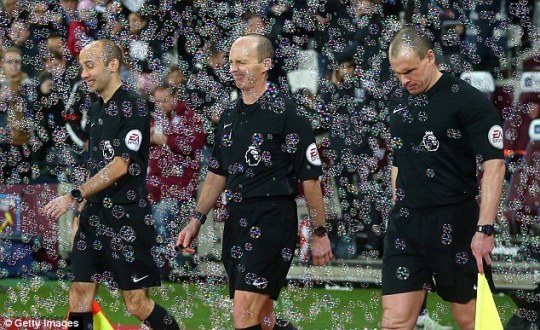
So, have a great weekend, and should I survive the potential onslaught of bubbles tomorrow I shall return next week where I will outline my learning cycle and my luck with the taming of Lord VoldRmort!
0 notes
Text
Kick Off...
This is the first of many blogs in relation to my experience as an aspiring researcher and will serve as the primary resource that I will adopt to express my thoughts, feelings and acquired knowledge throughout the PY0766 module.
Well, where to start? This is the eve of my second week on my new course and while I cannot begin to express how excited I am by the opportunities that have been channelled my way, whether in the form of placements, research groups or the newfound fact that the word “I” is now permissible in an official assessment. What is a shame however, is what runs parallel to this....The insurmountable quantity of anger, fear and worry, caused by the statistical programming equivalent of Lord Voldermort himself... R-Studio. This I will touch on in later.
In brighter news, I have received some really useful advice concerning the theoretical and practical underpinnings associated to conceptualising and designing a feasible research project. Specifically, how our tendency to rely on t-values is actually fundamentally flawed, as using the .05 significance level statistically infers around 45% of all findings could in-fact be false, especially in under-powered studies. Perhaps underling the necessity for preventative steps by researchers whether in the form of power analyses, methodology choice, design (low-bias meta analyses) or a-priori predictions (possibly in the form of R-values) to ‘sugar coat’ their findings should significant results be found.
However, this illuminates another vital point. Fundamentally, the psyche of the psychological community (if you pardon the pun) has long been obsessed with the notion of ‘significance’ in samples and their connotations on the global stage, and while I firmly understand the good this has done across multiple domains, perhaps the dawn of change is upon us. Recent work has begun to highlight this notion, and challenge the mentality of researchers so that instead of ‘chasing’ such significance, focus is beginning to paid to pre-registration, randomised trials and a elevated peer-review process.
Yet, while I am under no illusion that the psychometric ‘light at the end of tunnel’ is even there, let alone in sight, one thing this does do is perhaps open the door for a slightly frowned upon approach in qualitative methods. Its focus relies less on significant differences between groups, but rather on the raw themes and codes that underpin them, requiring less (albeit some) interpretation making it less prone to forms of bias.
All of which is very important, and has shaped my personal thoughts on the topic, so much so that for my thesis I am considering a mixed methods approach, and while I understand this can cause difficulties in the design stage and in possible discrepancies between data types. I believe, should care be taken, it allows for the theoretical exploration of a topic, while also inferring to the traditional standards of allowing for a statistically significant result.
However, for this I will need R-studio...sorry Lord VolRmort. For those who haven't encountered this treacherous piece of software before the only way I can describe it is in the form of a hormonal child that literally has its own mood swing in its front garden. So that, even the slightest cock up results in (what it perceives to be) the end of the world, throwing its toys out the pram and instead of crying, it repeatedly yells at me about “syntax errors”.
The annoying thing is however, much like a moody 16 year old whose parents forgot to buy it the latest FIFA 18 game, no matter how many times I tell it everything is going to be okay, and enter a new code (or hypothetically give it its game) it sticks its bottom lip out and wants nothing to do with you! So much so, you become that intertwined in the process you forget you left you Pizza in the oven resulting in this...
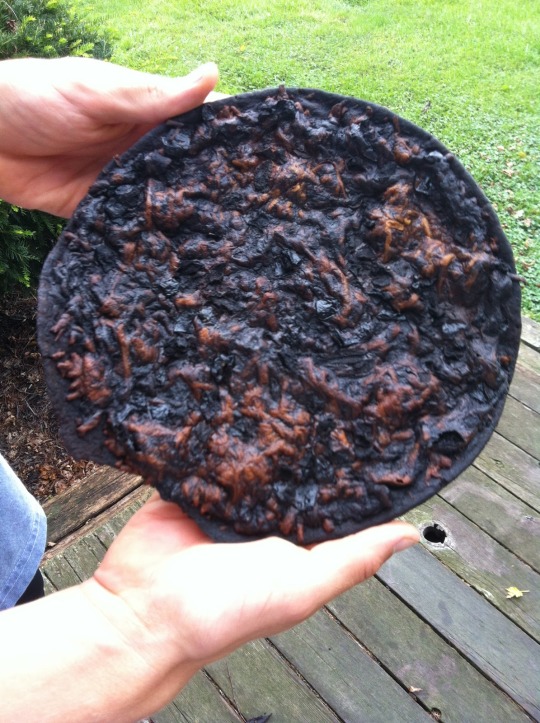
However, I will muster through (with the cooking and VoldRmort). So...3 mental breakdowns, a heart to heart about p-values and a burnt pizza later this concludes my first blog!
They’ll be no pictures this week as I’m currently in hiding following a rather controversial penalty decision at Arsenal last weekend, so keep posted for further updates! Thanks for reading!
Mike
0 notes

